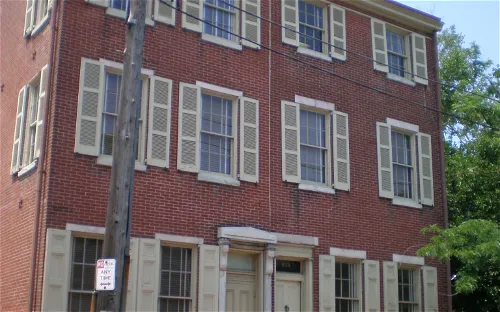Edgar Allan Poe National Historic Site and its collection
The Edgar Allan Poe National Historic Site is a protected building situated in the Spring Garden district of Philadelphia, Pennsylvania. This historic site is where the renowned writer Edgar Allan Poe rented a brick house during his time in Philadelphia from 1837 to 1844. It is a significant location as it is the only surviving residence of Poe in Philadelphia.
Edgar Allan Poe's Residence and Works
Edgar Allan Poe resided in the house from 1842 to 1844. During this period, he created the character of detective C. Auguste Dupin in 'The Murders in the Rue Morgue' and wrote stories like 'The Tell-Tale Heart'. This house is therefore a significant site for understanding the context and environment in which Poe created some of his most famous works.
Visitor Center and Exhibition
The actual residence of Poe is neither restored nor furnished due to the lack of preservation of the original furnishings. However, the visitor center in the attached building, which did not exist during Poe's time, houses an exhibition on the life and work of the author. Additionally, it has two rooms furnished in the style of the time, providing a general impression of the period.
History & Anthropology Historic house Language & Literature Person & Artist
#9 Free museums in Philadelphia #18 History & Anthropology in Philadelphia #12 Historic houses in Philadelphia #4 Language & literature museums in Philadelphia #13 Person & artist museums in Philadelphia #14 Free museums in Pennsylvania #27 History & Anthropology in Pennsylvania #19 Historic houses in Pennsylvania #4 Language & literature museums in Pennsylvania #16 Person & artist museums in Pennsylvania #25 Language & literature museums in United States #190 Person & artist museums in United States

